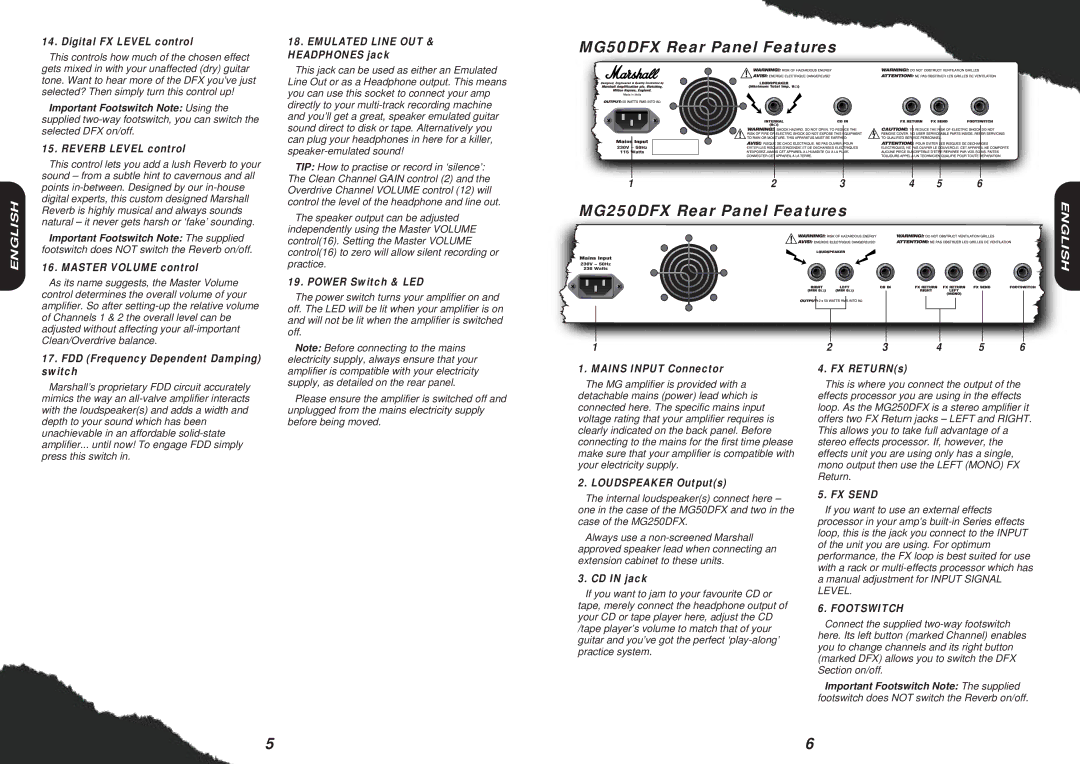MG50DFX, MG250DFX specifications
Marshall Amplification has long been synonymous with legendary guitar tone, and the MG series, particularly the MG250DFX and MG50DFX, embodies this tradition while incorporating modern technologies for today's musicians. Both models are part of Marshall's solid-state amplifier line, offering reliability, versatility, and impressive sound quality tailored for all skill levels.The MG250DFX is a powerful 250-watt amplifier head, perfect for larger venues and stage performances. It features four channels to cover a diverse range of tones: clean, crunch, overdrive, and a second overdrive. This allows guitarists to switch easily between sparkling clean sounds and high-gain distorted tones without missing a beat. Essential to the MG250DFX is its Digital FX processor, which provides a wide array of effects, including reverb, delay, and chorus, allowing musicians to enhance their sound in real-time.
On the other hand, the MG50DFX is a more compact option, boasting 50 watts of power, making it suitable for practice environments, smaller gigs, and home use. Like its larger counterpart, it features four channels for versatile tone shaping. Both models include a built-in speaker emulator, which ensures that players can achieve great tone even when using the headphone output or direct outputs for recording.
An important characteristic of both amplifiers is their user-friendly interface, featuring intuitive controls that allow musicians to dial in their perfect sound quickly. The MG series incorporates Marshall’s unique tone shaping circuit that gives users the ability to sculpt their tone with precision.
The MG250DFX and MG50DFX both come equipped with the innovative M-Gain system, which optimizes gain structure to improve response and enhance tonal clarity. Additionally, these amplifiers are designed to be highly portable, with lightweight construction and robust build quality, ensuring they can withstand the rigors of transport.
In summary, the Marshall MG250DFX and MG50DFX amplifiers represent a fusion of classic Marshall tone and modern technology, catering to a wide range of playing styles and preferences. Whether on stage or in the studio, these amplifiers deliver exceptional sound that bolsters a guitarist's performance. With their multiple channels, built-in effects, and versatile controls, they are powerful tools for any musician seeking to expand their sonic palette.

